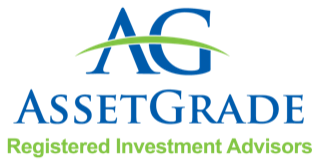
Tax Diversification – Why We All Need It
BY: PATRICK COTE
You may not have heard about tax diversification – most people have not. Tax diversification is making sure that investments are placed into three different account types to hedge against future tax increases: pretax (e.g., traditional IRA or 401K), taxable (e.g., regular brokerage account) and tax-free (e.g., Roth IRA or Roth 401K). More people should be talking about it, since it is one of the most critical parts of most investment plans and can make a large difference for your after-tax investment returns.
The conventional wisdom has been to save money pretax, typically in your 401K, when you are working and have a higher income. The rationale is that when you retire, you will have a lower income and therefore pay less income tax when you withdraw money from your pretax accounts. As you probably know, US income tax rates are progressive (tiered), so the percentage tax rate goes up as your income goes up. If you are married filing jointly and making $80K per year, you are only paying 12% federal income tax, while it goes up to 37% if you are making more than $622K.
If your income is lower in retirement and we have the same tax rates as we have today, you are generally better off following the conventional wisdom and saving a lot on a pretax basis. However, what happens if tax rates are different in the future?
Irrespective of politics, there is a high likelihood that future income tax rates will be higher than our current rates. We are now at the lowest income tax rates in the last 90 years. We are also back to the highest levels of debt in US history (similar to the level we incurred in World War II). Social Security and Medicare will face funding gaps, starting in the next decade (we have not been hearing much about these funding gaps, however, they are still out there!). On top of all of this, we have had to incur unusually large deficits now to deal with the coronavirus pandemic. With all of this pressure, there is a real possibility that future income tax rates will go up.
To put it in perspective, the highest marginal income tax rate was 70% in 1980. At $46K in income back then (worth about $144K in today’s dollars), you would have faced a marginal tax rate of 49%. For today’s investors, it can make retirement saving a lot more difficult if income tax rates reach those types of levels. It could mean that you would have to pay much more in taxes if every dollar you need in retirement is coming out of pretax investment accounts.
Tax diversification is a way to help protect yourself from the risk of future higher tax rates, by by generally trying to get your assets into three different buckets:
- Pretax 401K or IRA
- Taxable brokerage account
- Roth 401K or IRA
Instead of keeping most of your retirement assets in pretax investment accounts like a traditional 401K or IRA, you can also build assets in your taxable brokerage accounts and Roth 401K or IRAs as well. It is very easy to build assets in a taxable brokerage account – just contribute each month the way you likely are right now in your 401K.
Roth accounts can be very attractive, although it is a little more complex to get the money into these kinds of accounts. With Roth 401K or IRAs, the money going into the accounts is already after-tax. Any investment returns in the Roth accounts are tax-free. When you withdraw the money from your Roth in retirement, you do not pay any tax at all, even on the earnings. The catch is that there are income limits for contributing to a Roth IRA ($139K if you are single or $206K if married). The good news is that there are no income limits for Roth 401K contributions. If your income is above those levels, you should check to see whether your 401K plan allows you to make the Roth contributions. You can contribute up to $19.5K/year (or $26K/year if you are age 50 or older).
Having your assets in all three tax buckets helps give you a hedge against future higher income tax rates. If income tax rates manage to stay low, you will still benefit from having assets in pretax accounts. However, if income tax rates go up, you can be selective about which accounts you withdraw your money from when you need it in retirement for any given year – you can then try to minimize the tax impact based on your future income.

